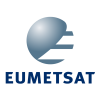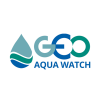North America
Related Content
Article
Event
Project / Mission / Initiative / Community Portal
Stakeholder
Person
Software/Tool/(Web-)App
Hydrologic deep learning toolbox
This code, accessible here https://github.com/mhpi/hydroDL, contains deep learning code used to modeling hydrologic systems, from soil moisture to streamflow, from projection to forecast. The starting core of the code is a highly efficient LSTM code based on cudnn.
The work supported the publication of these papers:

















